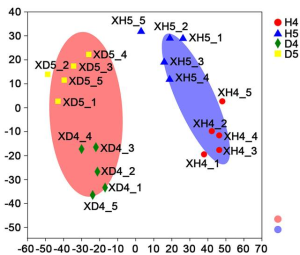A group from Hubei Key Laboratory of Crop Disease, Insect Pests and Weeds Control, Wuhan, Hubei Province, China, etc. has reported about the relationship between wheat root rot disease and soil fungi.
https://www.ncbi.nlm.nih.gov/pmc/articles/PMC8675258/
There was a significant difference in abundance of fungi in the rhizosphere soil between healthy groups (H54 and H5) and diseased groups (D4 and D5) as shown below (with PCA analysis).

The genera with significant or extremely significant differences in richness among the above mentioned groups were Alternaria, Apodus, Epicoccum, Scytalidium and Chaetomium.
Alternaria: decrease in diseased states,
Apodus: increase in diseased states,
Epicoccum: decrease in diseased states,
Scytalidium: increase in diseased states, and
Chaetomium: increase in diseased state.
The existence of pathogenic fungi is a necessary condition for wheat root rot disease, but the richness of pathogenic fungi is not necessarily important. Based on the physical and chemical properties of the soil, an increase in NH4, NO3 and total nitrogen contributes to the occurrence of wheat root rot disease. Soil pH and soil density had the greatest influence on the abundance and diversity of rhizosphere fungi, and the influence was in the same direction; low soil pH and soil density are beneficial to the occurrence of wheat root rot disease.
